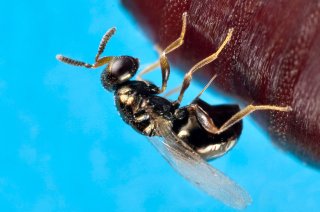
RP5 Genomic basis of life history traits and reproductive potential
This project aims at identifying the genes underlying life-history traits important to biocontrol in the model parasitoid Nasonia vitripennis. In particular, RP5 will study gene expression at different ploidy levels (number of chromosome sets) and in artificially selected lines for traits important in biological control (e.g. fecundity, diapause, host specificity).
Knowledge about the genomic basis of life history traits is fundamental to understand how organisms adapt to their environment. Such knowledge can also be used in breeding programmes to artificially select for specific traits. Although this has been common practice for life stock, it has not been exploited for improving biocontrol agents. Key for this approach is the identification of life history genes and the allelic variation that is present at these loci. In this project, we will investigate the genetic basis of life history traits in the parasitoid wasp Nasonia vitripennis, which is a genetic model organism among the Hymenopteran insects.
With the availability of the complete Nasonia genome sequence and annotation, the identification of gene-networks underlying specific life history traits has become feasible in this model parasitoid. The focus will be on life history traits that are important for biocontrol, such as longevity, developmental time, fecundity, diapause and host specificity. We will perform genomic and transcriptomic analysis on artificially selected lines for these traits. In addition, we will investigate the effect of ploidy (number of chromosome sets) on life history traits. We have the genetic tools to manipulate the ploidy level of both sexes to study phenotype and gene expression alterations following polyploidization.
